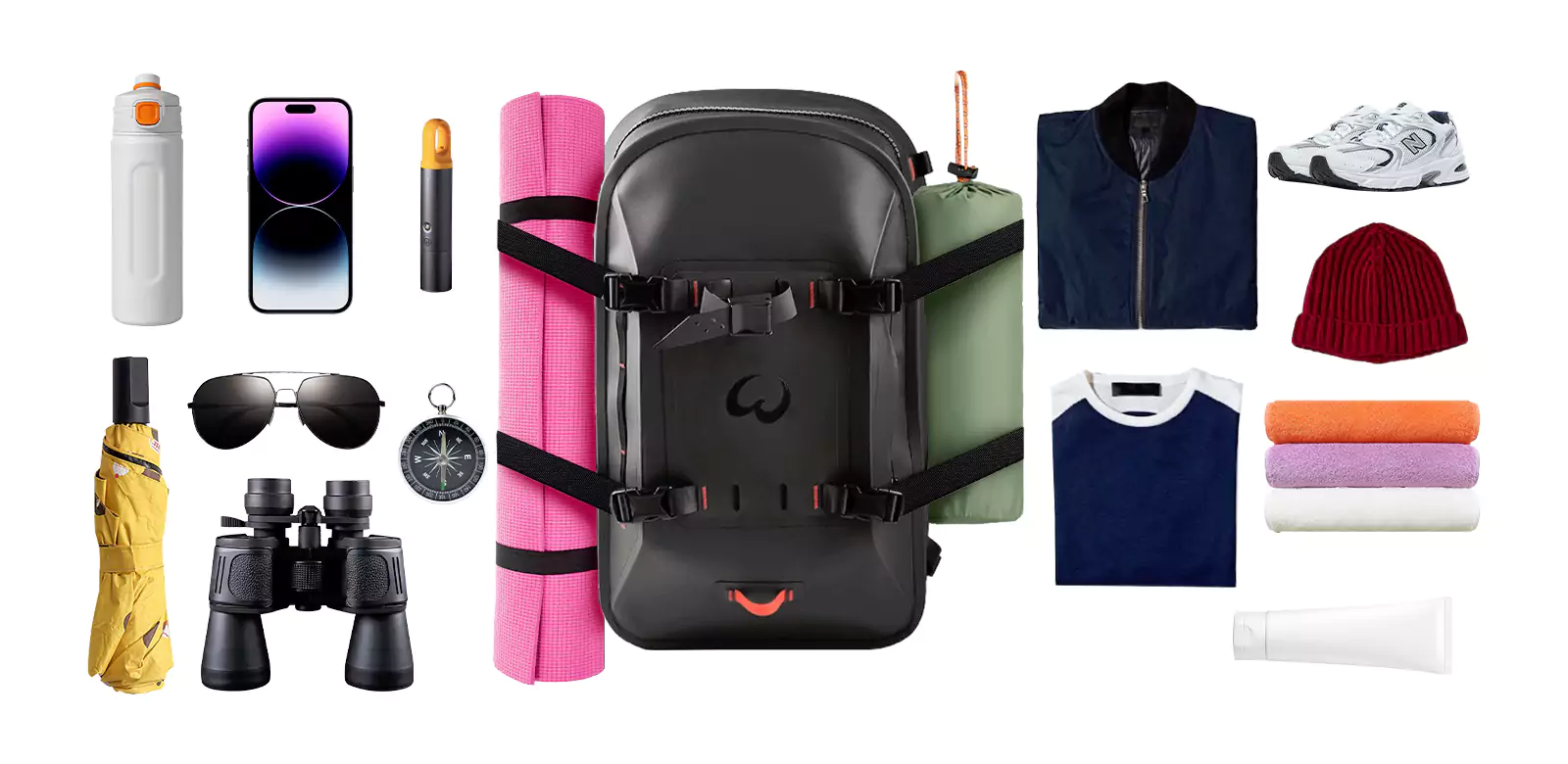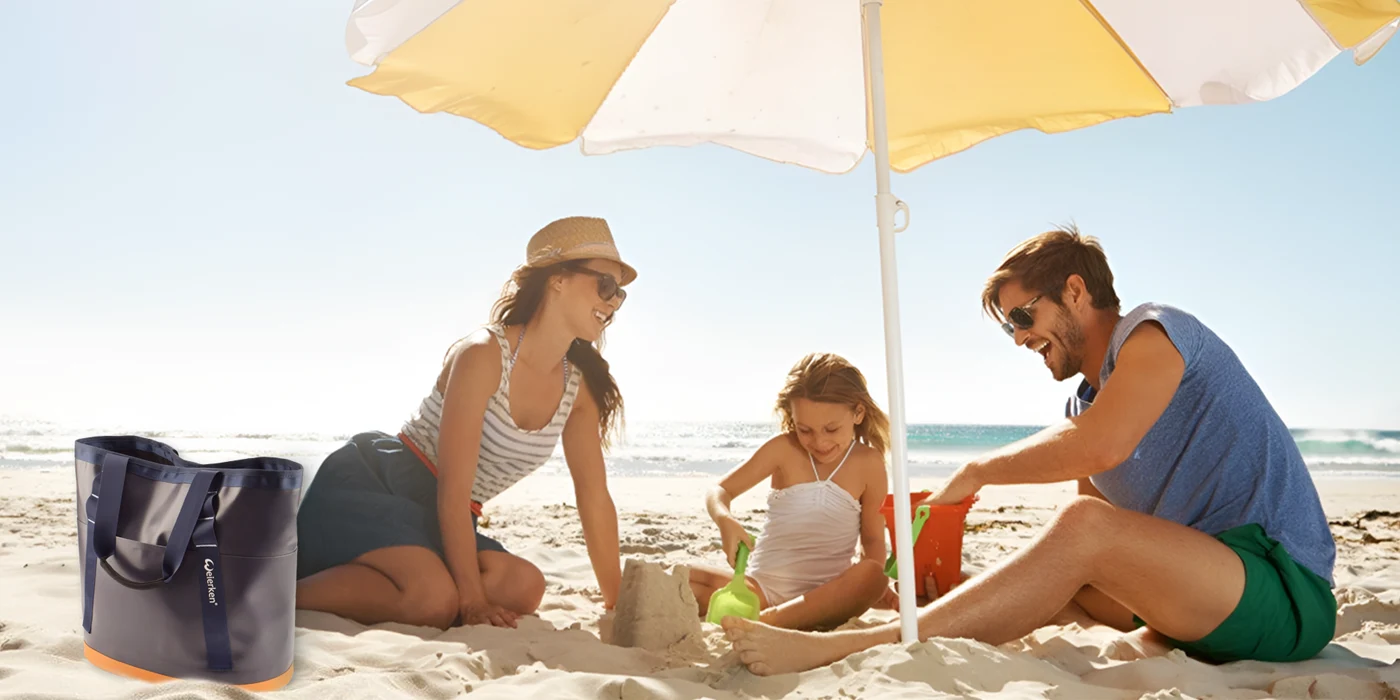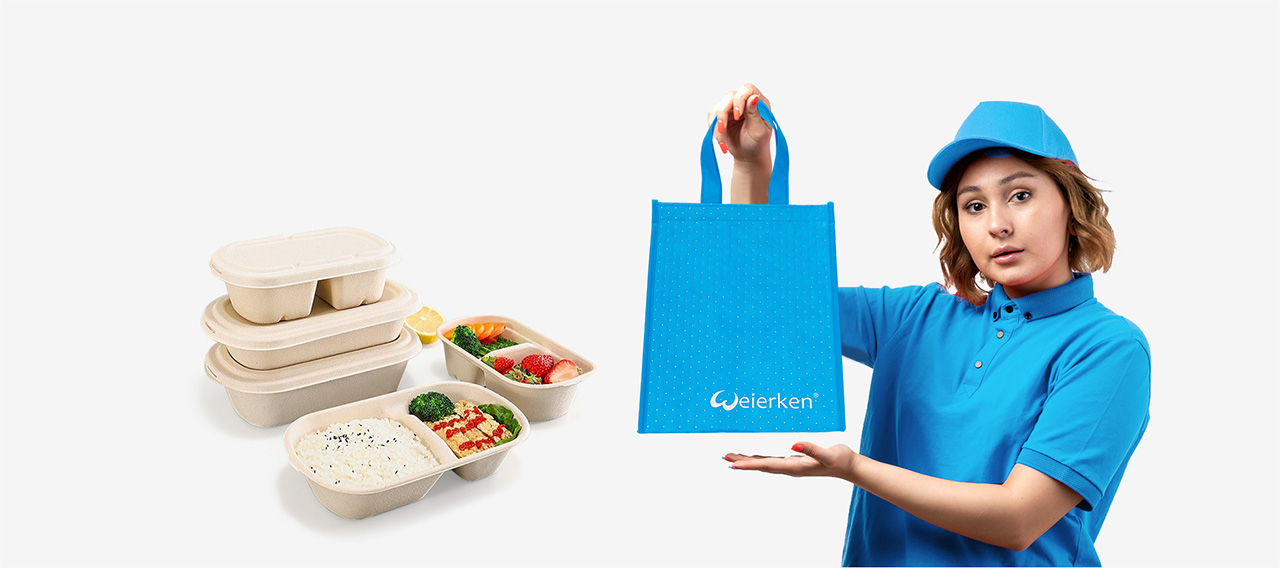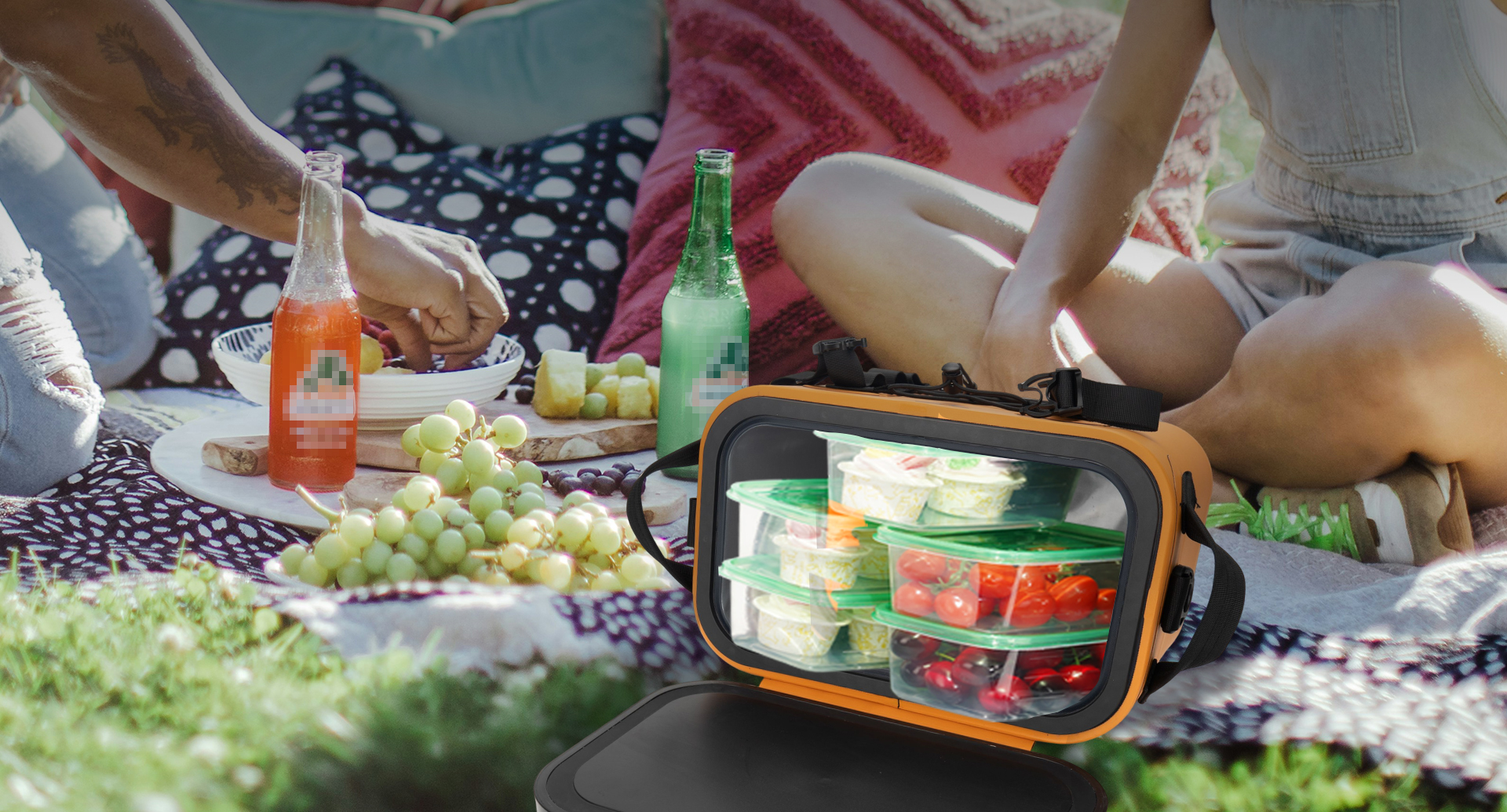Navigating the world of duffel bag bulk order procurement can feel like a complex puzzle. Whether you’re a retailer, a corporate gifts buyer, or a promotional event planner, understanding what drives the final price per unit is crucial for your budget and strategy. The unit cost of a custom duffel bag isn’t just a random number; it’s the culmination of a series of interconnected decisions and market forces.
For businesses like yours, getting the best value from a bulk duffel bag supplier means looking beyond the initial quote. It’s about analyzing the entire production and supply chain. In this comprehensive guide, we’ll break down the eight key factors that directly impact your cost in a duffel bag bulk order. As we explore these factors, we’ll occasionally reference weierken, a manufacturer known for its focus on balancing these very elements to deliver value.

The 8 Key Cost Drivers in Your Duffel Bag Bulk Order
Factor 1: Material Cost
The foundation of any duffel bag’s cost and character is its material. The choice here creates a ripple effect on durability, aesthetics, and, most significantly, price.
- Standard Materials: Common options include nylon (known for its lightweight strength and water resistance), polyester (a cost-effective and color-fast alternative), and canvas (valued for its classic, rugged feel). A basic polyester bag will almost always have a lower unit cost than a high-denier, branded nylon counterpart.
- Sustainable Materials: The growing trend towards eco-friendliness introduces materials like recycled PET (from plastic bottles) or organic cotton. While these materials often carry a premium, they can be a powerful marketing tool and align with corporate sustainability goals. The key for practitioners is to balance the desired level of durability and brand image with the material budget.
Factor 2: Production Scale and Order Quantity
This is where the principle of economies of scale comes into play. Placing a large duffel bag order allows the manufacturer to spread fixed costs—like factory setup, pattern making, and mold creation—across a greater number of units. This dramatically reduces the cost per bag.
However, it’s not just about ordering massive quantities. You must also consider the manufacturer’s Minimum Order Quantity (MOQ). While pushing for a higher quantity can lower the price, you need to balance this against your storage costs and inventory turnover. Furthermore, a massive order might strain a supplier’s production capacity, potentially leading to delays.
Factor 3: Labor and Production Costs
Where your duffel bags are manufactured is a major cost determinant. Labor rates vary significantly across the globe.
- Geographical Variations: Traditionally, China has been a hub for manufacturing, offering a blend of skilled labor and scale. However, countries in Southeast Asia, such as Vietnam and Bangladesh, are increasingly competitive, sometimes offering lower labor costs.
- Automation: Manufacturers who invest in automated cutting and sewing can often offer more competitive pricing and higher consistency on large runs. A supplier like weierken, for instance, might utilize automated processes for standard components, reserving skilled manual labor for complex customizations, thus optimizing the cost-quality equation.
Factor 4: Customization and Design Complexity
A plain, stock duffel bag is the most cost-effective option. Every layer of customization adds to the cost.
- Logo and Branding: Embroidery is typically more expensive than screen printing due to the time and thread involved. A complex, multi-color logo will cost more than a simple, single-color one.
- Functional Customizations: Adding extra pockets, specific compartmentalization, unique zippers, or special hardware all require additional materials, labor, and design time. For cost control, practitioners are often advised to stick to a supplier’s standard design templates as much as possible.
Factor 5: Supply Chain and Logistics Efficiency
The journey of the duffel bag from the factory floor to your warehouse has a direct impact on your total landed cost.
- Shipping Method: The choice between sea freight and air freight is a classic trade-off between cost and speed. Sea freight is far more economical for a large duffel bag order but takes weeks. Air freight is fast but can be prohibitively expensive.
- Inventory Management: Efficient supply chain planning can reduce costs associated with warehousing and capital tied up in unsold stock. A responsive supplier can help you align production with your demand cycles.
Factor 6: Supplier Relationship and Negotiation
Your relationship with your bulk duffel bag supplier is a strategic asset. A long-term, reliable partnership can lead to tangible financial benefits.
- Discounts and Flexibility: Trusted clients often receive better pricing, more favorable payment terms (e.g., 30% deposit instead of 50%), and priority during peak production seasons.
- Assessing Reliability: A reliable supplier minimizes risks of delays and quality issues, which are hidden costs. Evaluating a supplier’s communication, track record, and transparency is as important as negotiating the per-unit price.
Factor 7: Quality Control and Standard Compliance
Implementing rigorous quality control (QC) checks and adhering to international standards (like ISO certifications) cost money. These costs are factored into the unit price.
However, this is an area where cutting corners is dangerous. High QC standards reduce the risk of defective products, customer returns, and brand reputation damage. For B2B clients, it’s a critical exercise in weighing the initial cost savings of a lower-priced, lower-quality bag against the potential long-term costs of failure. A focus on consistent quality is a hallmark of reliable partners in this space.
Factor 8: Order Timing and Market Demand
The timing of your duffel bag bulk order can significantly influence pricing.
- Seasonality: Demand for duffel bags often spikes around holidays, back-to-school seasons, and major sporting events. Placing orders during these peak times may mean higher prices and longer lead times due to factory congestion.
- Strategic Procurement: Savvy practitioners plan their procurement for off-peak seasons. Approaching a supplier during their slow period can give you more leverage to negotiate better rates and ensure timely production.
A B2B Perspective: How Different Players View Duffel Bag Bulk Orders
The priorities for a duffel bag bulk order shift depending on where you sit in the supply chain.
Manufacturer’s Perspective
For a manufacturer, the goal is to minimize the unit cost through efficient production. This involves optimizing material procurement, streamlining factory workflows, and careful capacity planning. Their expertise lies in executing a custom duffel bag production run as efficiently as possible.
Wholesaler/Distributor’s Perspective
Wholesalers live and die by margin and turnover. They prioritize bulk purchase discounts from manufacturers and focus on a fast inventory turnover rate. They must also efficiently manage the custom demands of their own diverse retail clients.
Corporate Client’s Perspective
A company sourcing duffel bags for employees or as promotional gifts looks at the Total Cost of Ownership (TCO). This includes the unit price, but also delivery timelines, and, crucially, how well the final product reflects brand consistency and quality. They need a supplier who can deliver on brand promise, not just the lowest cost.
Logistics Service Provider’s Perspective
For a 3PL (third-party logistics) company, a duffel bag bulk order is about optimizing transportation routes, consolidating shipments, and providing efficient warehousing solutions to reduce overall supply chain expenses for their clients.
Conclusion and Strategic Recommendations
Your duffel bag bulk order cost is a dynamic figure, shaped by the interplay of the eight factors discussed. A decision on material affects durability and branding; your order quantity influences production efficiency; and your supplier choice impacts everything from cost to quality.
To optimize your corporate duffel bag sourcing, we recommend:
- Conduct Data-Driven Analysis: Use historical data to forecast demand accurately, helping you determine the ideal order quantity and timing.
- Foster Collaborative Supplier Relationships: Treat your supplier as a partner. Open communication with a company like weierken can lead to joint problem-solving and cost-saving innovations.
- Stay Agile: Keep a pulse on market dynamics, including raw material price fluctuations and the growing importance of sustainable and ethical sourcing trends.
By taking a holistic and strategic approach, you can ensure your next duffel bag bulk order delivers maximum value for your business.
Frequently Asked Questions (FAQs) About Duffel Bag Bulk Orders
1. What is a typical Minimum Order Quantity (MOQ) for a custom duffel bag bulk order?
MOQs vary widely by supplier and customization level. They can range from as low as 500 pieces for simple customizations to 10,000 pieces or more for complex designs. It’s always best to discuss your specific project with potential bulk duffel bag suppliers to get a clear MOQ.
2. How much does customization, like a logo, add to the unit cost?
The cost impact depends on the method and complexity. Screen printing a simple, one-color logo might add a few cents to a dollar per bag. A detailed, multi-color embroidery could add several dollars. Your supplier should provide a detailed cost breakdown for each customization element.
3. Are sustainable materials a cost-effective option for a large duffel bag order?
Currently, sustainable materials like recycled polyester often come at a premium compared to virgin materials. However, this gap is narrowing as they become more mainstream. The “cost-effectiveness” should also be measured in terms of brand value and appeal to environmentally conscious consumers, which can justify the initial higher investment.
4. How can I ensure quality control for my order, especially if manufacturing overseas?
Reputable suppliers will have in-house QC processes and can provide pre-shipment inspection reports. For large orders, it’s highly advisable to hire a third-party inspection service to conduct checks during production and before shipment. This provides an unbiased assessment of the product quality.
5. What is the lead time I should expect for a large, customized duffel bag order?
Lead times are typically 30 to 90 days from order confirmation. This timeline includes material sourcing, production, quality control, and shipping. The exact duration depends on the order complexity, factory schedule, and your chosen shipping method (sea freight vs. air freight). Always build a buffer into your timeline to account for unforeseen delays.






